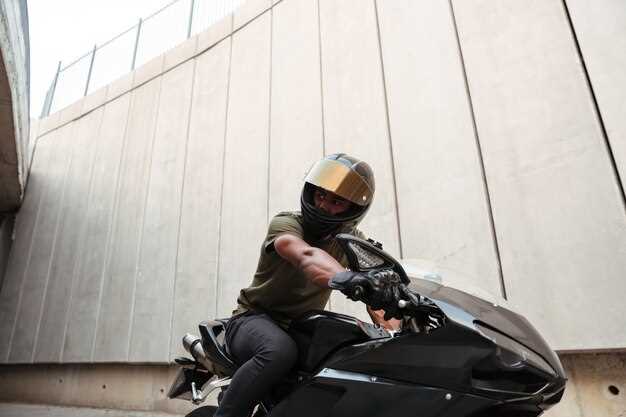

Navigating through heavy traffic on a motorcycle can be both exhilarating and daunting. The freedom offered by riding can quickly diminish when faced with the challenges of congested roads, unpredictable drivers, and limited maneuvering space. Ensuring safety in these conditions requires a combination of awareness, skill, and proactive measures.
Understanding the unique risks associated with riding a motorcycle in heavy traffic is crucial for every rider. Unlike cars, motorcycles lack the protective barriers that provide an added layer of safety, making it vital for motorcyclists to adopt strategies that maximize their visibility and minimize potential hazards. From maintaining a safe distance to being vigilant about blind spots, every action counts when it comes to ensuring a smooth ride amidst bustling vehicles.
In this article, we will delve into essential tips that will help motorcyclists navigate heavy traffic safely. Whether you are a seasoned rider or a novice, these guidelines will equip you with practical knowledge to enhance your riding experience while prioritizing safety on busy roads.
How to Position Yourself Safely Among Vehicles

Proper positioning on the road is crucial for motorcycle riders, especially in heavy traffic. Always maintain a safe distance from vehicles around you. This space allows for better reaction times and minimizes the risk of collisions. Ideally, keep a distance of at least three seconds from the vehicle in front, adjusting this distance based on road conditions and your speed.
Utilize the lane effectively by riding in the “escape route,” which is the area of the lane that gives you the best option for a quick maneuver. Positioning yourself in the left or right third of the lane can enhance visibility and create an opportunity to navigate around obstacles or vehicles that may encroach on your space.
Be aware of blind spots. It is essential to avoid riding directly next to larger vehicles such as trucks and buses, as they have significant blind spots that can obscure your presence. Instead, maintain a position slightly ahead or behind them when possible, ensuring that you remain visible to their drivers.
Signal your intentions clearly when changing positions. Use your turn signals well in advance to communicate with other drivers. This practice not only enhances your visibility but also gives surrounding vehicles time to react appropriately to your movements.
In heavy traffic, anticipate the behavior of other drivers. Keep an eye on the brake lights of vehicles ahead to avoid sudden stops. Be prepared to maneuver out of tight spots and always have an exit strategy, such as an open lane or a safe area to pull over if needed.
Lastly, avoid the temptation to filter through lanes when traffic is at a standstill or moving slowly. While lane splitting can be safe in some jurisdictions, it requires careful judgment and awareness of the surrounding environment. Make sure that there is enough space to maneuver safely without putting yourself at risk.
Understanding Traffic Patterns and Anticipating Driver Behavior

Recognizing traffic patterns and anticipating other drivers’ actions are essential skills for safe motorcycle riding, especially in heavy traffic conditions. Enhanced situational awareness can significantly reduce the risk of accidents.
Here are some crucial aspects to consider:
- Traffic Flow: Observe how vehicles move in different scenarios. Are they accelerating quickly? Are there frequent stops? Understanding the ebb and flow helps in predicting potential hazards.
- Patterns of Lane Changes: Many drivers change lanes without proper signaling, especially in congested areas. Look for indicators such as vehicle positioning and head movements of drivers to anticipate lane changes.
- Stop-and-Go Traffic: In stop-and-go situations, maintain a safe following distance. Anticipate sudden halts and be ready to react swiftly to any brake lights ahead.
Additionally, recognizing typical driver behaviors can enhance your ability to navigate traffic effectively:
- Distracted Driving
- Road Rage: Aggressive drivers can pose significant risks. Stay calm, avoid eye contact, and give way to aggressive behaviors when necessary.
- Turning Vehicles: Be aware of vehicles preparing to turn. They may not see you, particularly in blind spots. Always position yourself to have an escape route if a vehicle suddenly turns.
Finally, practice defensive riding. Constantly scan your surroundings, anticipate potential issues, and always have an exit plan. By understanding traffic patterns and the behaviors of other drivers, motorcyclists can enhance their safety in heavy traffic conditions.
Using Visibility Techniques to Enhance Your Safety
Visibility is critical for motorcyclists, especially in heavy traffic. Enhancing your presence on the road can significantly reduce the likelihood of accidents. To improve your visibility, consider incorporating high-visibility gear into your riding wardrobe. Brightly colored jackets, helmets, and pants can make you more noticeable to other drivers, especially in low-light conditions.
Using reflective materials on your motorcycle and gear is another effective method to enhance visibility. Reflective vests or decals can catch the light from vehicles, making you more detectable at night or during overcast weather. Additionally, ensure your motorcycle’s lights are functioning correctly and consider upgrading to LED lights for increased brightness.
Positioning on the road also plays a vital role in visibility. Instead of riding in a car’s blind spot, position yourself in lanes where you can be seen easily by motorists. When stopped, offset your bike slightly to the side of the lane to increase visibility. Always be mindful of your surroundings and anticipate the movements of other drivers to maintain a clear escape route.
Utilizing turn signals and hand gestures effectively will further help communicate your intentions to other road users. Being predictable in your movements allows drivers to anticipate your actions, reducing the likelihood of sudden stops or lane changes that can lead to collisions.
Lastly, consider using auxiliary lights or daytime running lights to enhance your bike’s visibility during daylight hours. This additional lighting can reduce the chances of being overlooked by inattentive drivers. Prioritizing visibility techniques not only improves your safety but fosters a safer riding environment for everyone on the road.






